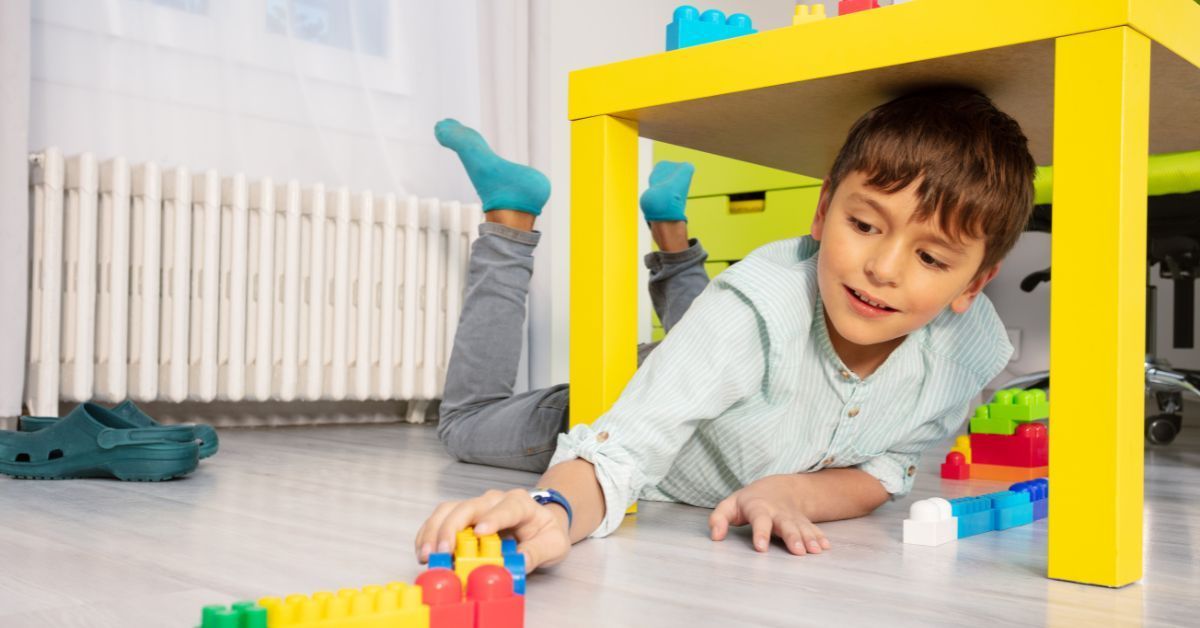Effective Reward Systems for Children With Autism
Supporting the growth and development of children with autism requires a well-thought-out approach to encourage positive behaviors and learning skills. Reward systems are one of the most powerful and proven methods to help children with autism thrive.
Designed to motivate socially adaptive behaviors and create structure, these systems can make a difference in daily routines, classroom environments, and therapeutic sessions. Given the unique needs of each child, knowing how to create reward systems effectively is key to their success.
This guide on effective reward systems for children with autism will explore what reward systems are, why they work well for children with autism, and how parents and educators can tailor them to individual needs. From tangible rewards to social reinforcements, understanding these techniques can empower caregivers and children to achieve meaningful progress.
Understanding Reward Systems
Reward systems are structured strategies that reinforce functional skills through positive reinforcement. They create a clear link between specific actions and a reward, helping children understand cause and effect. Acknowledging and rewarding good behavior increases the likelihood that the child will repeat it in the future.
These systems can be especially impactful for children with autism, who often thrive on structure and consistency. When used effectively, reward systems provide predictability, which fosters a sense of comfort, security, and motivation. Reward systems are a bridge between learning and behavior management, enabling children to develop essential skills while feeling supported.
Types of Reward Systems for Children With Autism
Tangible Rewards
Tangible rewards are easy to understand and offer clear cause-and-effect connections between a behavior and its reinforcement. Examples include stickers, small toys, tokens, or even edible treats. For instance, a simple reward chart where a child earns a sticker for completing a task like cleaning up toys can motivate them to continue engaging in positive behaviors. Tangible rewards work well in providing immediate feedback, which is essential for younger children or those who benefit from visual cues.
Social Reinforcers

Social rewards such as praise, high-fives, or verbal affirmations can be just as powerful as tangible rewards. When delivered enthusiastically and genuinely, social reinforcement boosts a child’s confidence and fosters a sense of accomplishment. For many children with autism, encouragement from trusted caregivers builds emotional connections and strengthens social interactions.
Activity-Based Rewards
Some children may respond more to activity-based rewards than tangible or social ones. Activities such as extra playtime, watching a favorite show, or engaging in a preferred hobby offer highly motivating experiences. These rewards can be seamlessly integrated into the child’s routine, helping them connect positive behaviors with enjoyable moments.
Activity-based rewards can also provide opportunities for children to engage in social and sensory experiences that enhance learning and development. These types of rewards are especially beneficial for children who are less motivated by material items or verbal praise alone.
Key Principles for Designing an Effective Reward System
Consistency is the foundation of a successful reward system. By delivering rewards immediately after a constructive action, children can develop a clear understanding of what is being reinforced. Offering the same level of consistency on a day-to-day basis further builds trust and helps children feel secure as they adopt new behaviors.
Individualization plays a vital role in tailoring reward systems. Every child has unique preferences, learning styles, and motivators. For example, some may prefer physical rewards like toys, while others find social reinforcement more rewarding.
Timing is another critical factor. Delaying reinforcement may diminish its impact, particularly for younger children or those in the early stages of adapting to a system. Initially, it’s best to use continuous reinforcement, delivering a reward after every instance of a growth-focused behavior. Over time, transitioning to intermittent reinforcement can maintain motivation while encouraging greater independence.
Tips for Using Reward Systems Effectively
As you get started, keep the system simple. Setting clear expectations and offering straightforward rewards helps children grasp a concept more easily. For instance, using visual aids like charts or pictures can clarify how behaviors and rewards are connected.
Gradually reducing rewards is an essential step as the system matures. Over time, scaling back the frequency or intensity of reinforcement can build intrinsic motivation. For example, if a child receives a sticker each time they greet someone, you might begin giving a sticker every few greetings instead. Tracking the child’s progress allows caregivers to identify whether a particular reward remains effective or if a change is needed.
Challenges in Implementing Reward Systems
Overreliance on Tangible Rewards
One common challenge is overreliance on tangible rewards, such as stickers or treats. While these rewards are effective in the short term, focusing too much on physical items may hinder the development of intrinsic motivation. Children may start to expect a reward for every action, which can undermine the child’s ability to perform tasks without external reinforcement.
To address this, strike a balance between tangible rewards and social reinforcement. By gradually increasing the use of verbal praise and activity-based rewards, children can begin to internalize positive behaviors without relying on material items.
Managing Behavioral Setbacks
Another challenge is dealing with behavioral setbacks. Sometimes, children may become frustrated or lose interest in the reward system altogether. When this happens, stay consistent with reinforcement, focusing on small, achievable goals. This approach helps children regain confidence and stay motivated.
Adapting the Reward System as Children Grow
As children grow and their interests and abilities evolve, keep adapting the reward system. What motivates a 5-year-old may not resonate with a 10-year-old. Keeping the reward system flexible and open to changes makes it relevant and effective in supporting a child’s ongoing development.
The Role of ABA Therapy in Reward Systems

Applied behavior analysis (ABA) therapy is an evidence-based practice that incorporates reward systems to help children with autism build essential skills. Through targeted strategies, ABA uses positive reinforcement techniques to teach social, communication, and adaptive behaviors. Working with autism service providers enables families to align reward systems with therapeutic goals, creating a cohesive approach to each child’s progress.
When caregivers collaborate with professionals, they gain access to expert knowledge about tailoring systems to their child’s developmental milestones. Developing consistency across home and therapeutic settings ensures the child experiences a unified framework of support, enhancing their long-term success.
Building Bright Futures Through Reward Systems
Effective reward systems for children with autism can transform how children learn and grow, fostering independence, confidence, and essential skills. From understanding different types of rewards to overcoming challenges, the key lies in creating tailored systems that meet the unique needs of each child.
At the HANDS Center for Autism, we specialize in designing individualized plans and integrating reward systems into ABA therapy to maximize your child’s potential. If you’re ready to provide your child with the tools for a brighter future, our experts are here to help.







